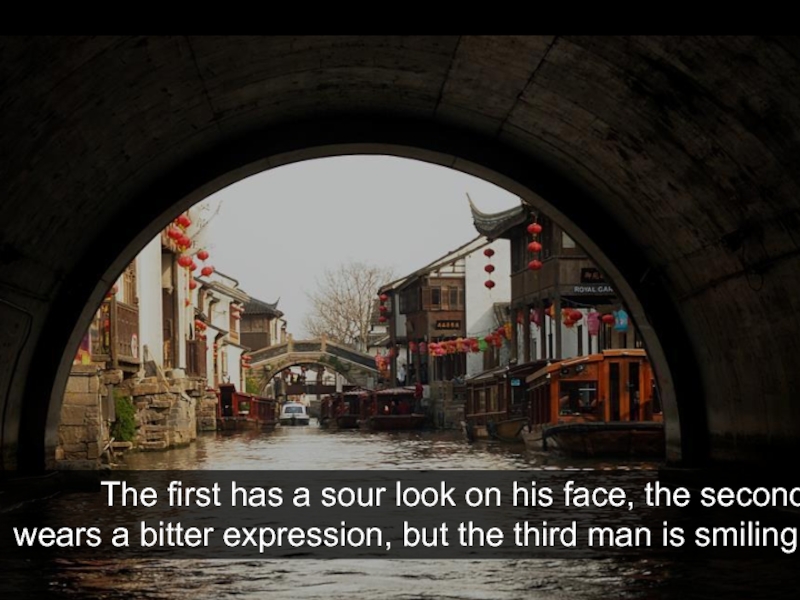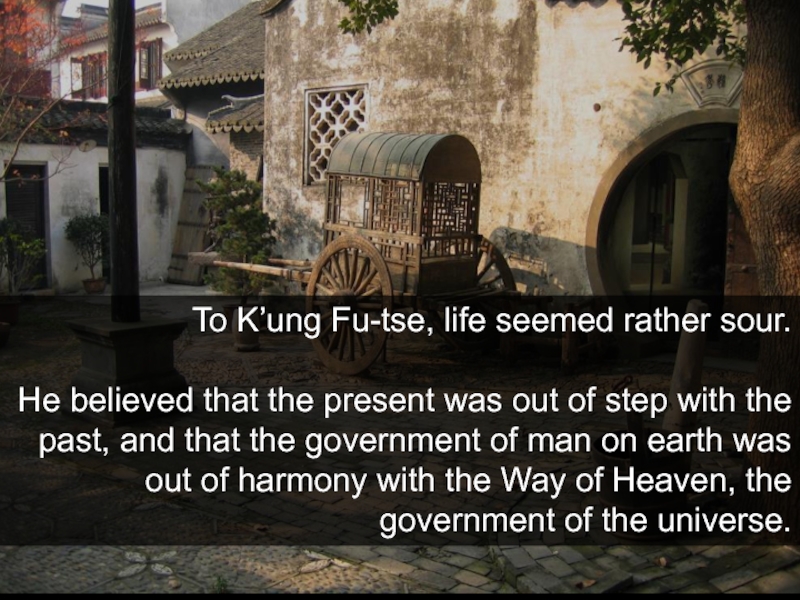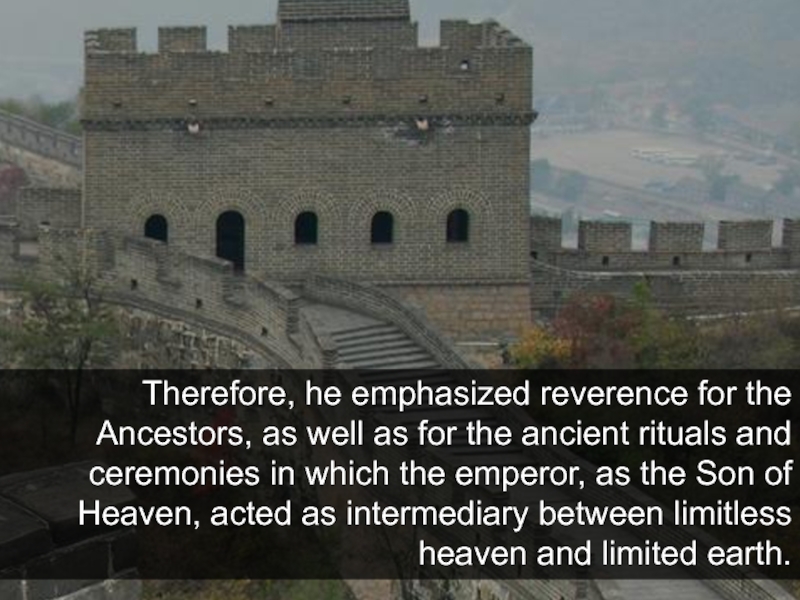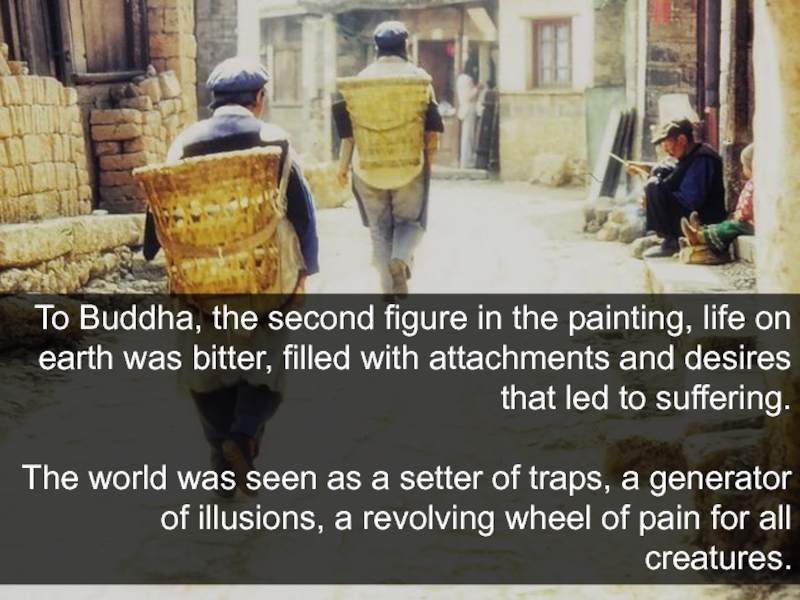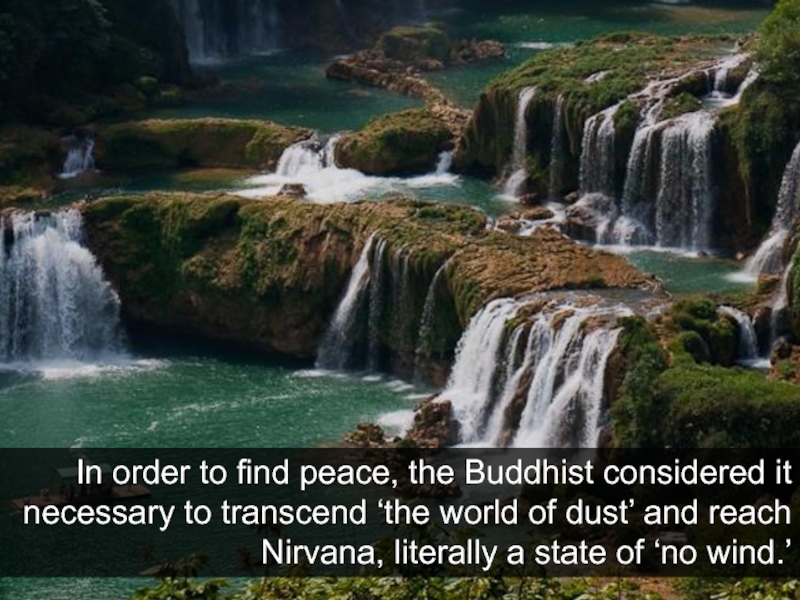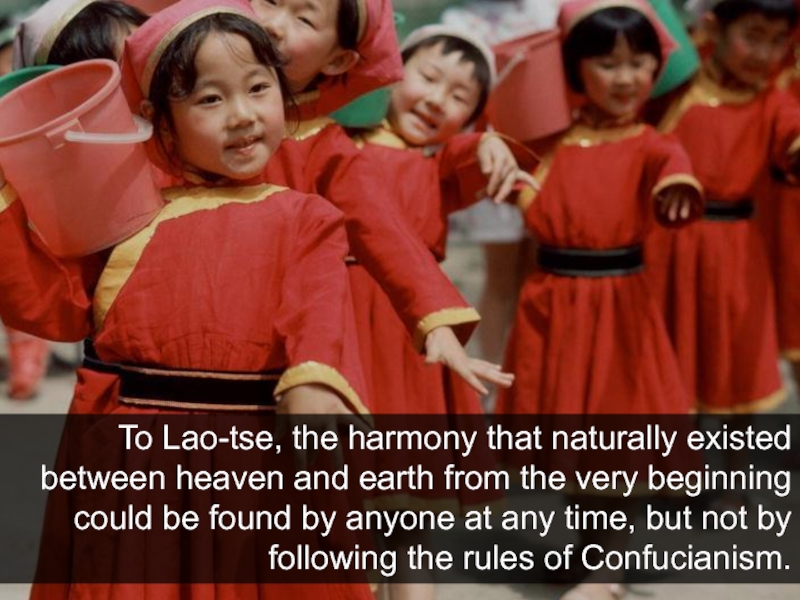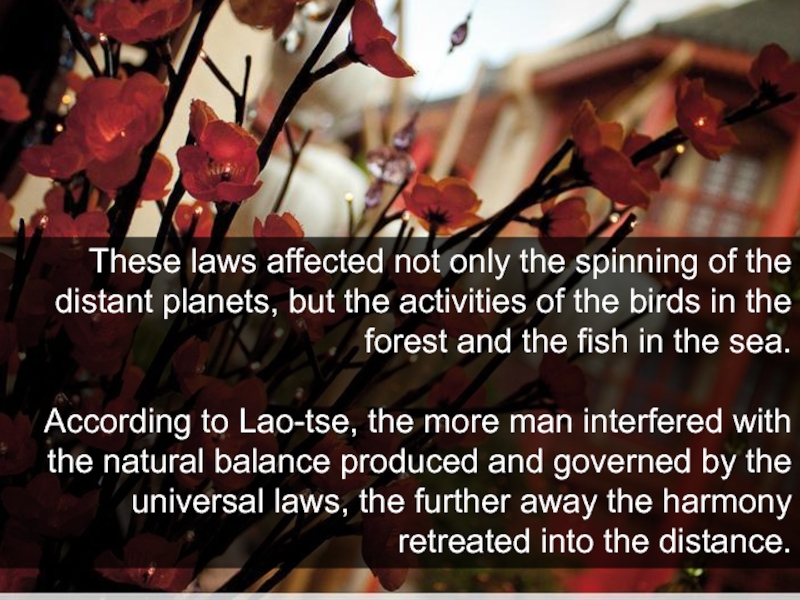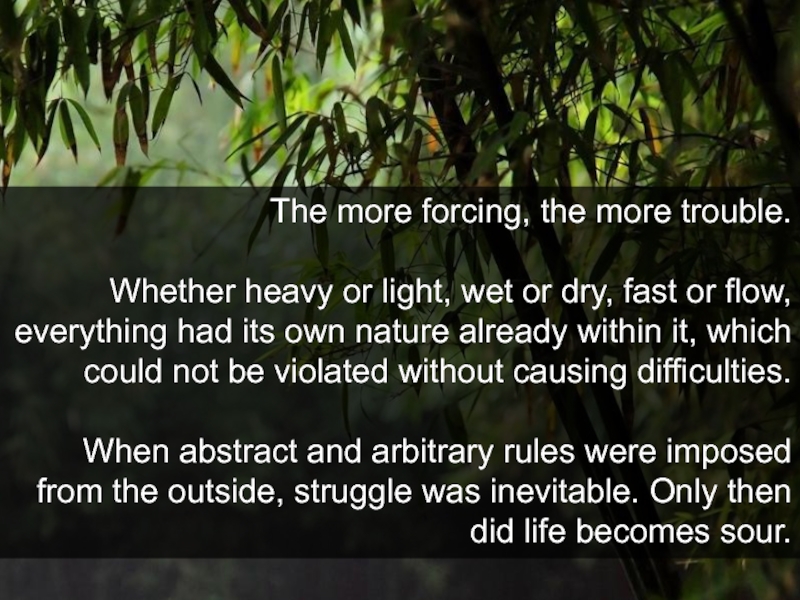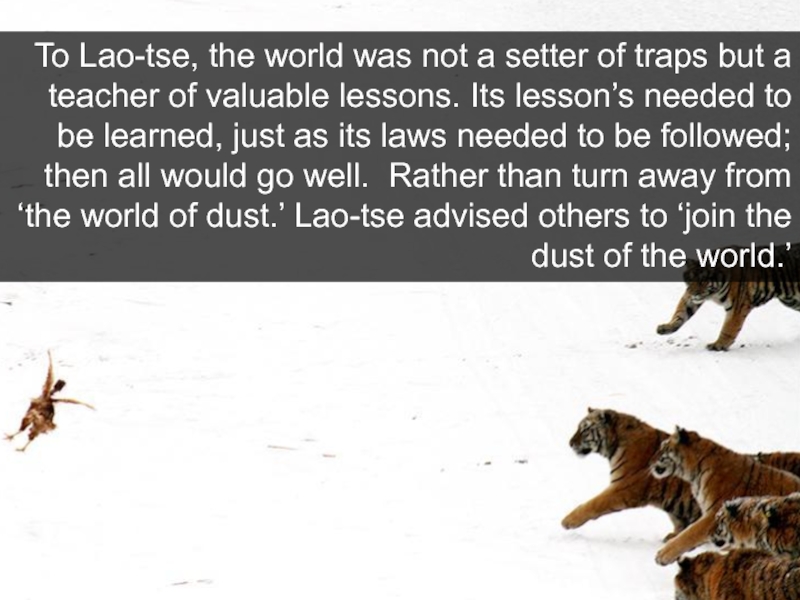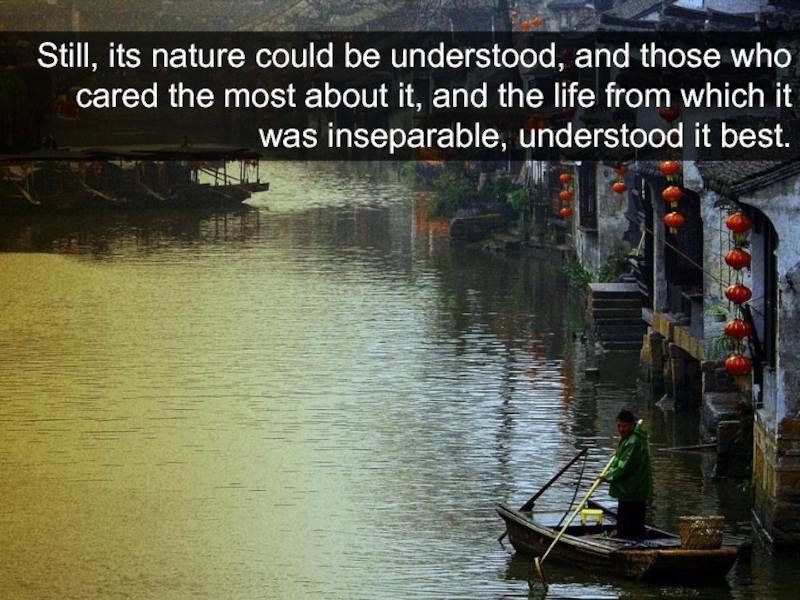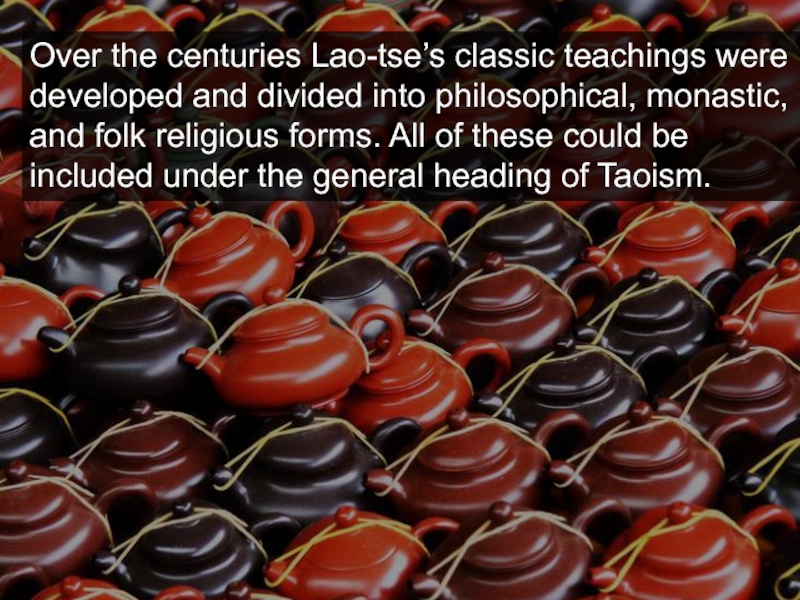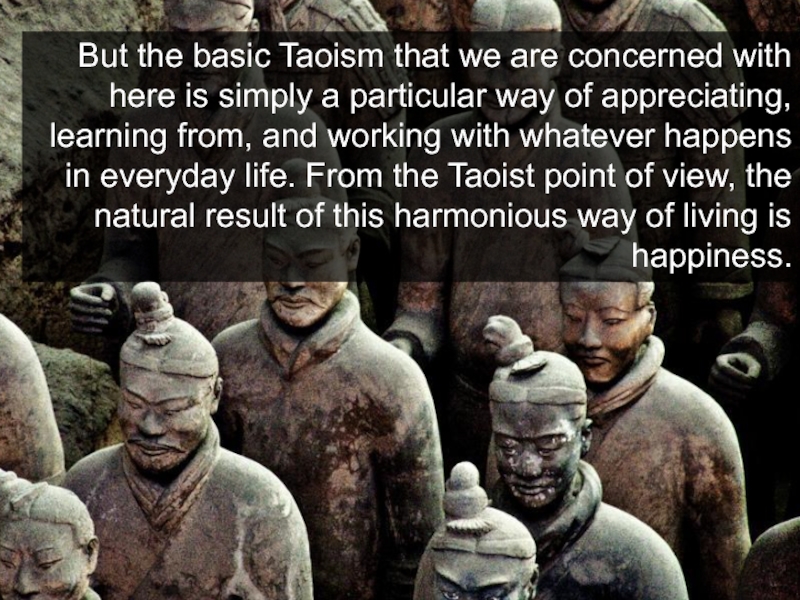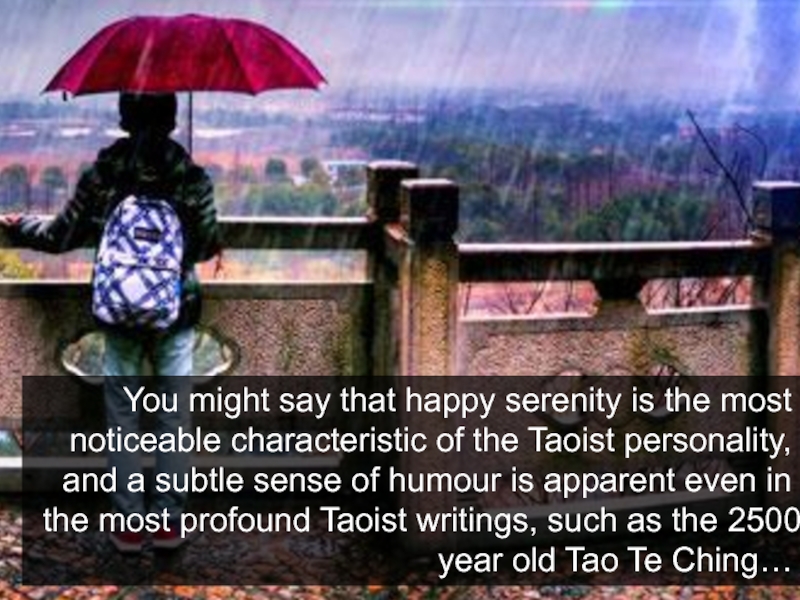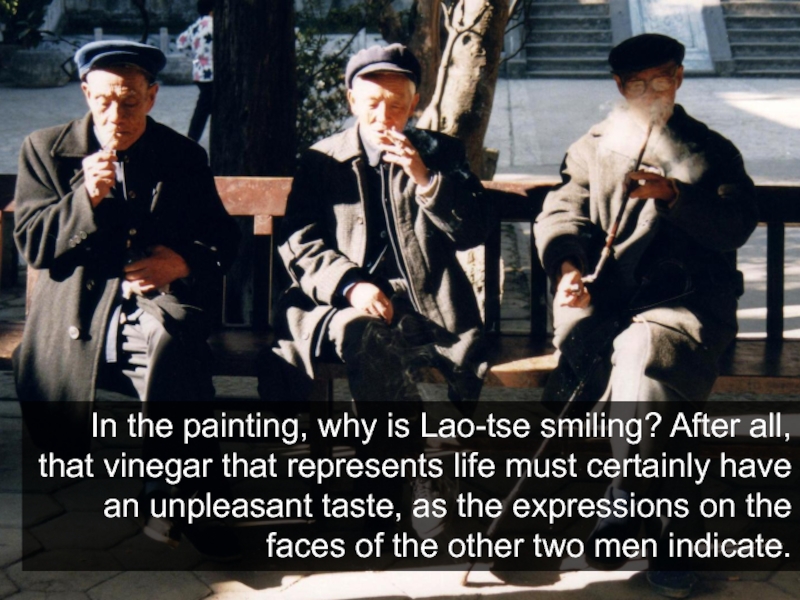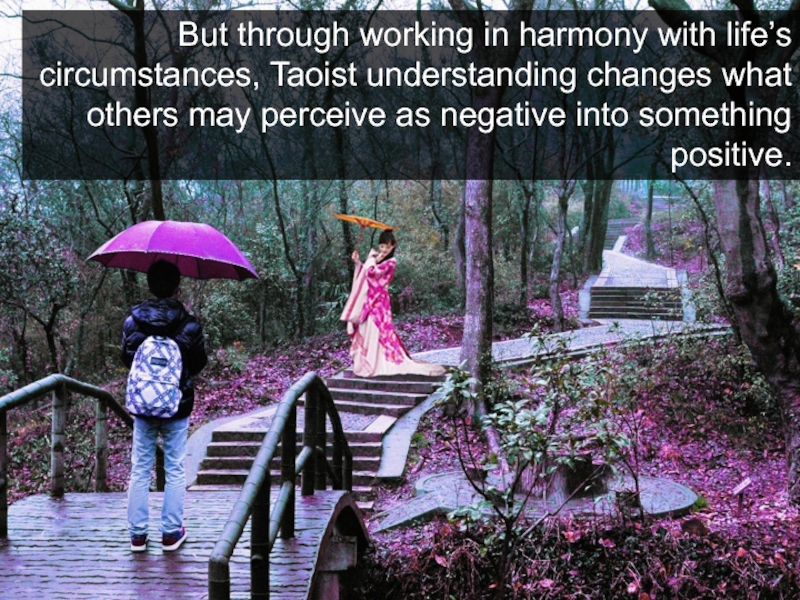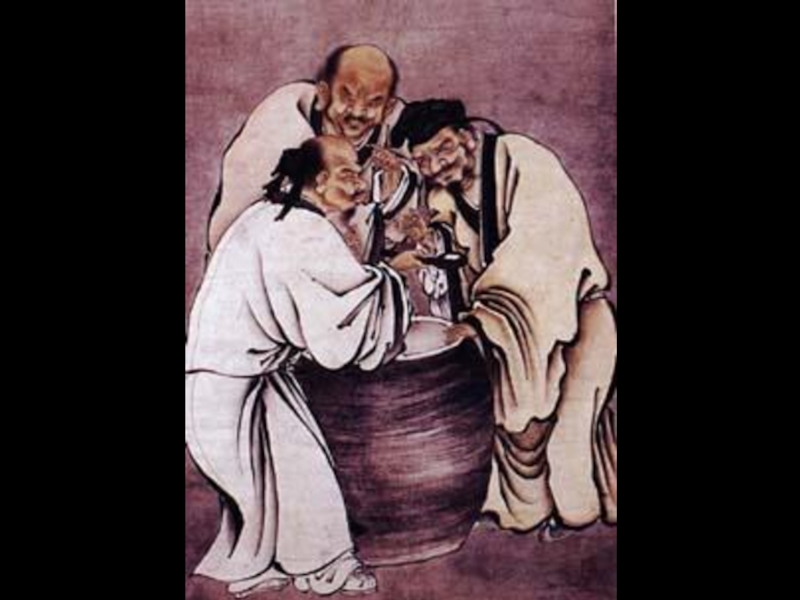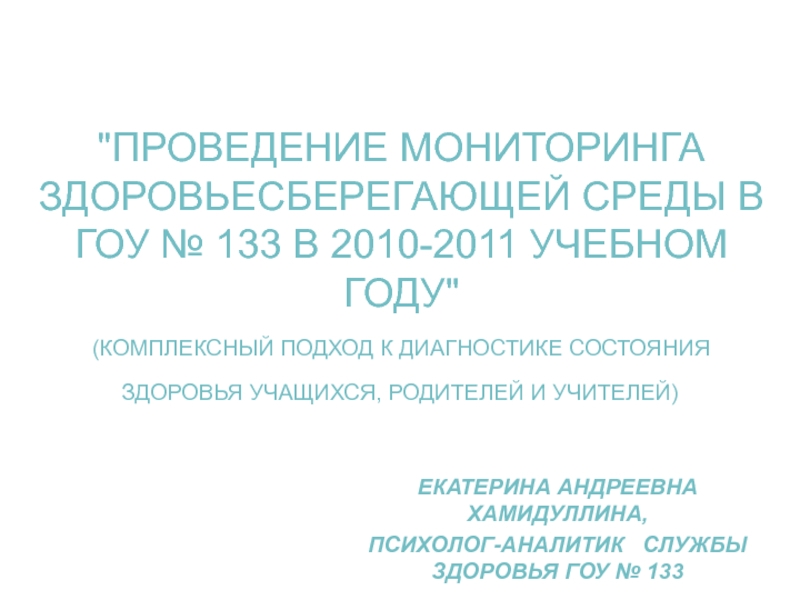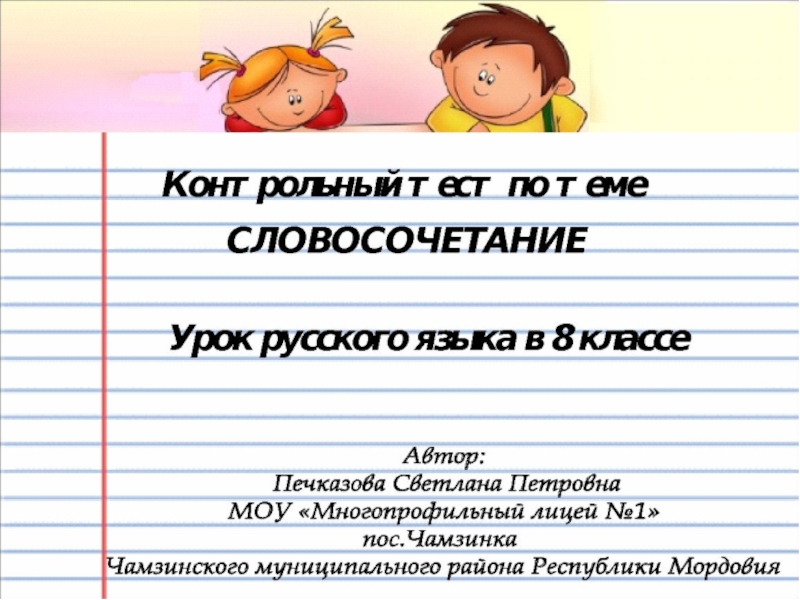- Главная
- Разное
- Дизайн
- Бизнес и предпринимательство
- Аналитика
- Образование
- Развлечения
- Красота и здоровье
- Финансы
- Государство
- Путешествия
- Спорт
- Недвижимость
- Армия
- Графика
- Культурология
- Еда и кулинария
- Лингвистика
- Английский язык
- Астрономия
- Алгебра
- Биология
- География
- Детские презентации
- Информатика
- История
- Литература
- Маркетинг
- Математика
- Медицина
- Менеджмент
- Музыка
- МХК
- Немецкий язык
- ОБЖ
- Обществознание
- Окружающий мир
- Педагогика
- Русский язык
- Технология
- Физика
- Философия
- Химия
- Шаблоны, картинки для презентаций
- Экология
- Экономика
- Юриспруденция
Chinese презентация
Содержание
- 1. Chinese
- 2. “[In the famous painting, The Vinegar Tasters]
- 3. The first has a sour look on
- 4. Since the painting is allegorical, we are
- 5. The three masters are K’ung Fu-tse (Confucius),
- 6. To K’ung Fu-tse, life seemed rather sour.
- 7. Therefore, he emphasized reverence for the Ancestors,
- 8. Under Confucianism, the use of precisely measured
- 9. A saying was recorded about K’ung Fu-tse:
- 10. To Buddha, the second figure in the
- 11. In order to find peace, the Buddhist
- 12. Although the essentially optimistic attitude of the
- 13. To Lao-tse, the harmony that naturally existed
- 14. As he stated in his book Tao
- 15. These laws affected not only the spinning
- 16. The more forcing, the more trouble.
- 17. To Lao-tse, the world was not a
- 18. What he saw operating behind everything in
- 19. Still, its nature could be understood, and
- 20. Over the centuries Lao-tse’s classic teachings were
- 21. But the basic Taoism that we are
- 22. You might say that happy serenity is
- 23. In the painting, why is Lao-tse smiling?
- 24. But through working in harmony with life’s
- 25. From the Taoist point of view, sourness
- 27. SHARE THIS DECK & FOLLOW ME (please-oh-please-oh-please-oh-please)
- 28. CREATIVE COMMONS ATTRIBUTIONS & REFERENCES
Слайд 2“[In the famous painting, The Vinegar Tasters] we see three men
standing around a vat of vinegar.
Each has dipped his finger into the vinegar and has tasted it.
The expression on each man’s face shows his individual reaction.
Each has dipped his finger into the vinegar and has tasted it.
The expression on each man’s face shows his individual reaction.
Слайд 3The first has a sour look on his face, the second
wears a bitter expression, but the third man is smiling.
Слайд 4Since the painting is allegorical, we are to understand that these
are no ordinary vinegar tasters, but are instead representatives of the Three teachings of China, and that the vinegar they are sampling represents the Essence of Life.
Слайд 5The three masters are K’ung Fu-tse (Confucius), Buddha, and Lao-tse, author
of the oldest existing book on Taoism.
Слайд 6To K’ung Fu-tse, life seemed rather sour.
He believed that the
present was out of step with the past, and that the government of man on earth was out of harmony with the Way of Heaven, the government of the universe.
Слайд 7Therefore, he emphasized reverence for the Ancestors, as well as for
the ancient rituals and ceremonies in which the emperor, as the Son of Heaven, acted as intermediary between limitless heaven and limited earth.
Слайд 8Under Confucianism, the use of precisely measured court music, prescribed steps,
actions, and phrases all added up to an extremely complex system of rituals, each used for a particular purpose at a particular time.
Слайд 9A saying was recorded about K’ung Fu-tse: “If the mat was
not straight, the master would not sit.”
This ought to give an indication of the extent to which things were carried out under Confucianism.
This ought to give an indication of the extent to which things were carried out under Confucianism.
Слайд 10To Buddha, the second figure in the painting, life on earth
was bitter, filled with attachments and desires that led to suffering.
The world was seen as a setter of traps, a generator of illusions, a revolving wheel of pain for all creatures.
The world was seen as a setter of traps, a generator of illusions, a revolving wheel of pain for all creatures.
Слайд 11In order to find peace, the Buddhist considered it necessary to
transcend ‘the world of dust’ and reach Nirvana, literally a state of ‘no wind.’
Слайд 12Although the essentially optimistic attitude of the Chinese altered Buddhism considerably
after it was brought from its native India, the devout Buddhist often saw the way to Nirvana interrupted all the same by the bitter wind of everyday existence.
Слайд 13To Lao-tse, the harmony that naturally existed between heaven and earth
from the very beginning could be found by anyone at any time, but not by following the rules of Confucianism.
Слайд 14As he stated in his book Tao Te Ching, the ‘Tao
Virtue Book,’ earth was in essence a reflection of heaven, run by the same laws – not by the laws of men.
Слайд 15These laws affected not only the spinning of the distant planets,
but the activities of the birds in the forest and the fish in the sea.
According to Lao-tse, the more man interfered with the natural balance produced and governed by the universal laws, the further away the harmony retreated into the distance.
According to Lao-tse, the more man interfered with the natural balance produced and governed by the universal laws, the further away the harmony retreated into the distance.
Слайд 16The more forcing, the more trouble.
Whether heavy or light, wet
or dry, fast or flow, everything had its own nature already within it, which could not be violated without causing difficulties.
When abstract and arbitrary rules were imposed from the outside, struggle was inevitable. Only then did life becomes sour.
When abstract and arbitrary rules were imposed from the outside, struggle was inevitable. Only then did life becomes sour.
Слайд 17To Lao-tse, the world was not a setter of traps but
a teacher of valuable lessons. Its lesson’s needed to be learned, just as its laws needed to be followed; then all would go well. Rather than turn away from ‘the world of dust.’ Lao-tse advised others to ‘join the dust of the world.’
Слайд 18What he saw operating behind everything in heaven and earth he
called the Tao, the Way. A basic principle of Lao-tse’s teaching was that this Way of the Universe could not be adequately described in words, and that it would be insulting both to its unlimited power and to the intelligent human mind to attempt to do so.
Слайд 19Still, its nature could be understood, and those who cared the
most about it, and the life from which it was inseparable, understood it best.
Слайд 20Over the centuries Lao-tse’s classic teachings were developed and divided into
philosophical, monastic, and folk religious forms. All of these could be included under the general heading of Taoism.
Слайд 21But the basic Taoism that we are concerned with here is
simply a particular way of appreciating, learning from, and working with whatever happens in everyday life. From the Taoist point of view, the natural result of this harmonious way of living is happiness.
Слайд 22You might say that happy serenity is the most noticeable characteristic
of the Taoist personality, and a subtle sense of humour is apparent even in the most profound Taoist writings, such as the 2500 year old Tao Te Ching…
Слайд 23In the painting, why is Lao-tse smiling? After all, that vinegar
that represents life must certainly have an unpleasant taste, as the expressions on the faces of the other two men indicate.
Слайд 24But through working in harmony with life’s circumstances, Taoist understanding changes
what others may perceive as negative into something positive.
Слайд 25From the Taoist point of view, sourness and bitterness come from
the interfering and unappreciative mind. Life itself, when understood and utilized for what it is, is sweet. That is the message of The Vinegar Tasters.”
Слайд 27SHARE THIS DECK & FOLLOW ME
(please-oh-please-oh-please-oh-please)
stay up to date with my
future slideshare posts
http://www.slideshare.net/selenasol/presentations
https://twitter.com/eric_tachibana
http://www.linkedin.com/pub/eric-tachibana/0/33/b53

![“[In the famous painting, The Vinegar Tasters] we see three men standing around a vat](/img/tmb/3/253756/8d468bcc3f12761e1873f238a2901e0f-800x.jpg)
